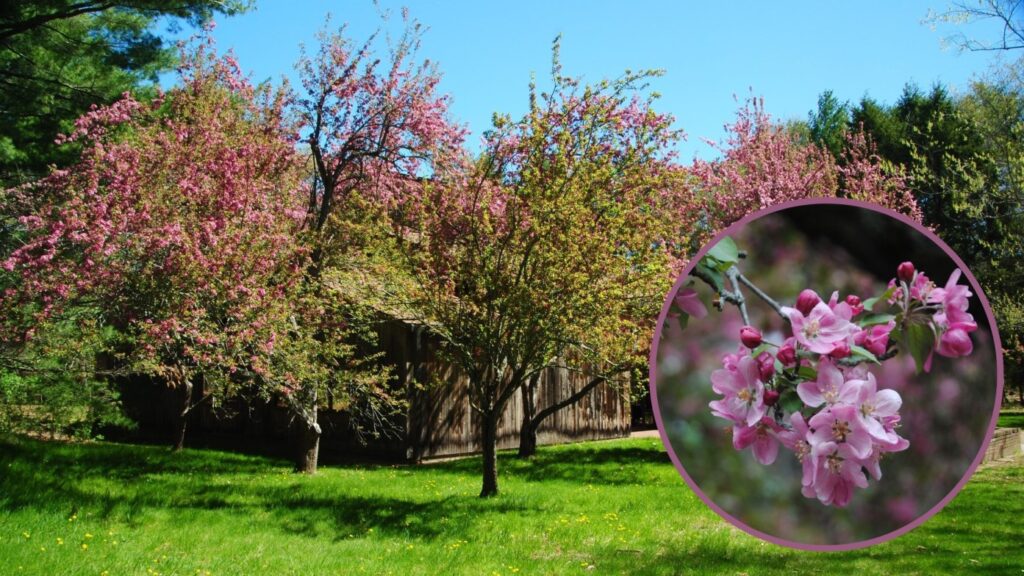
The crab apple trees at Minute Man Visitor Center in Lexington are in full bloom! Not only are they lovely to look at, the crab apple trees tell a story that is rooted in the North American landscape from which they spring.
The only apple trees native to the United States, they produce a small, hard, sour fruit that Native Americans appreciated and appropriated, and that, for newly arrived colonists from England, proved especially good in jellies and cider.
Still, apple recipes – and the cultivation of apple trees to go with them – were encouraged. The English Housewife, a cookery source of 1635, gave five options for preparing an apple pie or tart (“If you are wise, you’ll not brown sugar slight…”). By 1796, in her A Facsimile of “American Cookery” 1796, touted a pudding confection of apples, sugar, butter, eggs, cream, rose-water, cinnamon, grated “green lemon” peel, and the juice of half a lemon. “Currants, raisins, and citron some add, but good without them.
Over time, settlers from England brought their favorite customs and fruit trees with them, supplanting but never eradicating crab apple trees. Today, they remain part of the landscape and the story here at Minute Man National Historical Park.
Article and photos by Neil Lynch, Community Ambassador for Freedom’s Way National Heritage Area and Friends of Minute Man National Park.